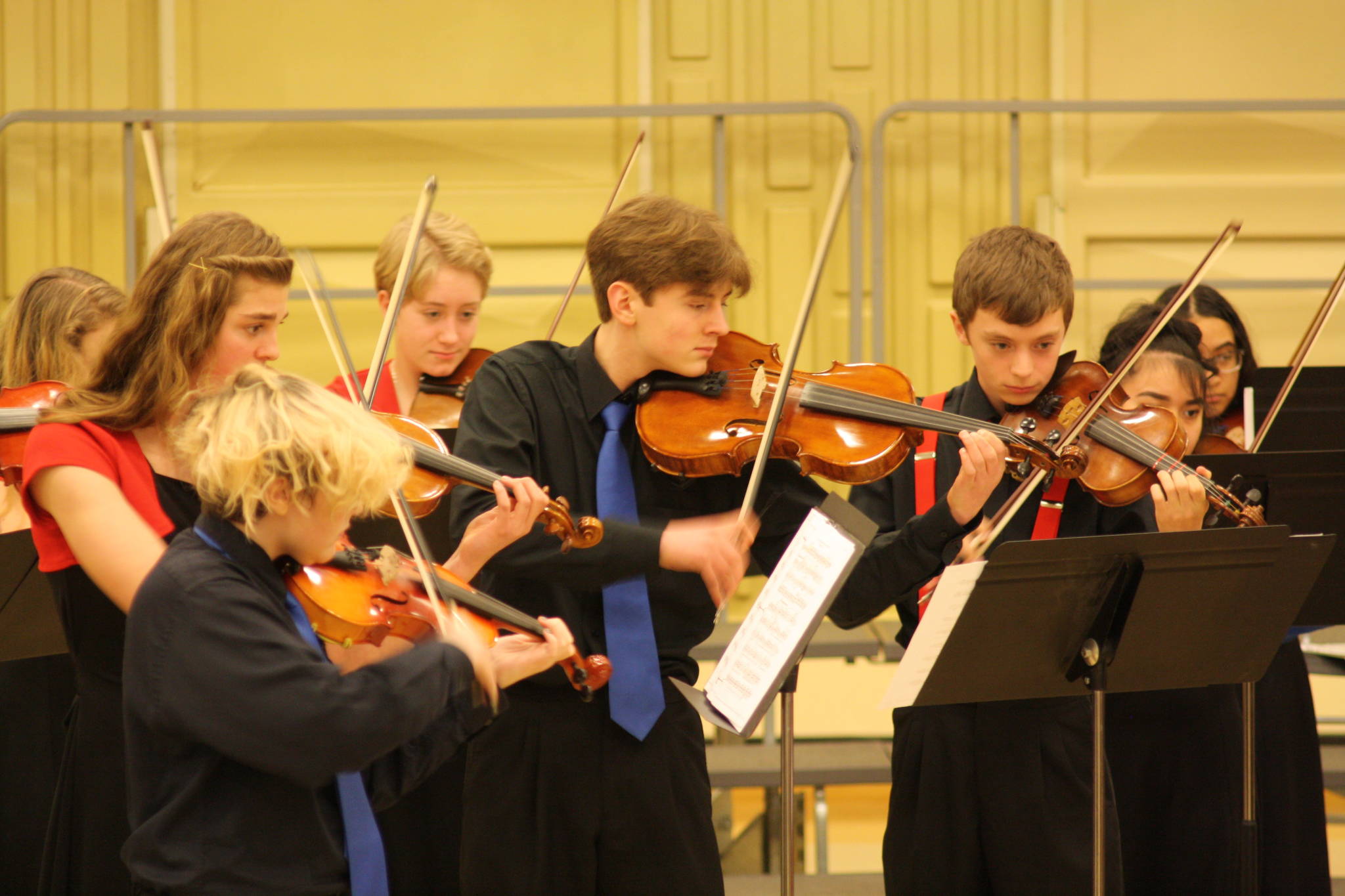Submitted by the Music Advocacy Group.
Congratulations to 2020’s Orcas Island School District high school graduates! Many of them have made us proud at concerts and competitions as Orcas High School musicians, especially Ewan Lister and Avery Bishop-Martin who were High School band musicians through their senior year.
Among his achievements, Lister auditioned and won a seat at the Washington Music Education Association All-State Band program in Yakima in February this year. Each year, about a thousand student musicians from across Washington are selected (from among a few thousand who audition) to participate in choir, band and orchestra groups under the baton of renowned conductors.
“Playing alongside other enthusiastic students is another one of the great benefits of All-State,” recalled Lister. “I was able to improve much of my own routine when I returned home.” The experience inspired him to deepen his listening skills and his knowledge of music theory.
Both seniors’ final performance as graduating seniors at the all-district band concert was not to be. Spring is traditionally the busiest time for students in the Middle and High School music programs but by mid-March, with the school shutdown, it became apparent that all the concerts, music festivals and competitions that the students had been practicing for would be canceled. A major disappointment was the cancellation of the 3rd and 4th graders’ trip to the Seattle Symphony, which was to have included a visit to the new Burke Museum.
OISD music teachers Pamela Wright and Darren Dix had to swiftly adapt the music curriculum to an online, remote learning format. Over the last few years, the music teachers have been incorporating the use of online music education software like SmartMusic™ and Essential Elements™ to help students learn theory and practice their instrument more effectively in the classroom and at home. They were also already using Google Classroom for music assignments. The shutdown challenged them to utilize these and other information technology more extensively to teach.
Mrs. Wright, who teaches K-4 General Music and 5-12 String programs, had to consider a wide age range of students. She created a website for parents to access K-4 music resources with links to online ‘meetings’ with students once a week. Older grades in the String programs met online twice a week.
“It is hard to help String students with positions,” she said of the challenges of teaching music online. “Tone quality is greatly affected by position and the tone quality coming through the online meet does not give the best example,” she explained.
Still, she created video music presentations, recording herself playing every part and uploading these clips to Google Classrooms on her website for the students to practice along with. These practice assignments were supported by online music theory quizzes that she created using the software on hand. She found it helped greatly when students were able to send her video recordings for her comments.
“It is definitely more time consuming, but can work. What cannot happen is the ensemble playing music together in the same room and seeing their excitement when they make a piece come together.”
For the Band program, Mr. Dix has used the online format to broaden his students’ exposure to different musical forms and experiences. Each week, in addition to instrument practice, Band students are emailed a distance learning ‘grid’ of music-related links to live streams, theory games, instrument videos, virtual walkthroughs of music instrument museums, and other fun things from which they had to select to complete as assignments.
“Students have seemed to enjoy this and appreciate the variety of things they can do for music classwork.” He has nudged their capabilities along further with a variety of composition assignments that students have to complete using online music composition apps.
Both teachers realize that what is missing is the collective thrill of making music together. To try to keep students engaged, the teachers are putting together virtual ensembles to help bridge the gap between in-class music-making and remote learning.
They are trying out powerful audiovisual editing tools like ‘Final Cut Pro’ and ‘Logic Pro X’ on a ‘free trial’ basis to see what these offer for a more enriching music learning experience in the new virtual learning environment.
“I am creating click tracks with me playing a few parts and directing, sending those out to students, and having them record with the play-along to create a virtual band,” explained Mr. Dix. “This makes them studio musicians, which is a fun, unique, and difficult skill set!”
String students are also doing their own recording assignments for Mrs. Wright.
“I am putting together one piece from each of my String groups as a virtual concert,” she said. “The students miss playing music together, but they love at least seeing each other in this group within which they have built a relationship.”
Mr. Dix recognizes the challenge for some students. “I have been compiling 2 virtual bands with students. Each band started with a simple Chorale, and we are now working on what would have been either a final concert piece or festival piece (depending on the group). Not every student has participated, but being thrown into the shoes of a studio musician is not an easy thing! I applaud all students who are able to make it work.”
Both teachers foresee a virtual aspect to the school music program going forward and are evaluating the lessons from this spring of online music teaching. Balancing the amount of virtual and in-person time in the program will be essential.
“I plan to take the assignments that have proven successful and continue to use them to augment in-classroom education,” said Mr. Dix.




